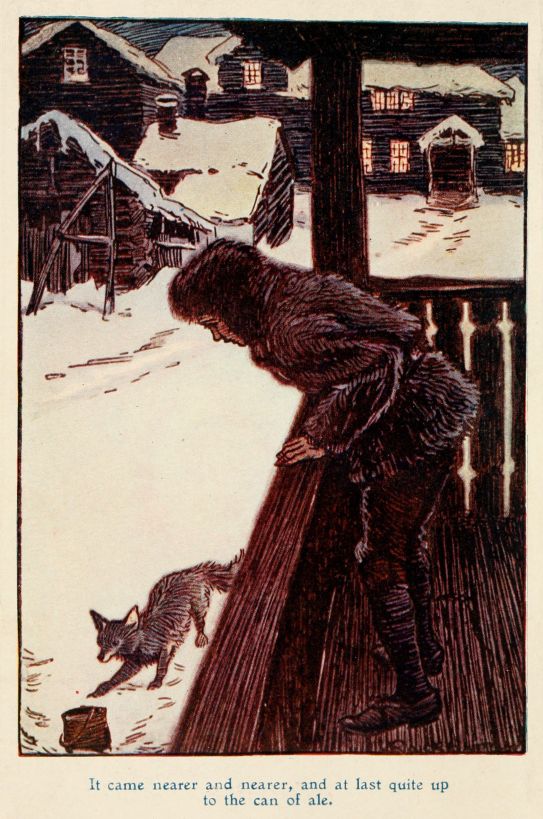
It came nearer and nearer, and at last quite up to the can of ale.
FEATS ON THE FIORD
BY
HARRIET MARTINEAU
WITH COLOURED ILLUSTRATIONS
BY ARTHUR RACKHAM
LONDON: J. M. DENT & SONS LIMITED
NEW YORK: E. P. DUTTON & COMPANY
1914
INTRODUCTION
Miss Martineau's Norwegian romance won its way long since into thehearts of children in this country. The unhackneyed setting to theincidents of the tale distinguish it from thousands of more ordinarychildren's stories; nor is there any other tale so well-known havingits scenes laid in the land of the fiords. It is quite safe to addthat perhaps no other author has felt so strongly and communicated soconvincingly the mystic charm of these northern lagoons with theirstill depths and reflections, their inaccessible walls of rock andtheir teeming wild-fowl life.
This mystic charm is deepened in the book by the thread of popularsuperstition which runs throughout the episodes and, in fact, givesrise to them. Miss Martineau's dénouements were calculated toshatter the follies of belief in Nipen and other supernatural agents;but her own crusading traffic in them rather endears them to theimagination of the reader and certainly supplies a fascination whichthe most sceptical of young readers would be sorry to miss.
The author also brings home to the youthful mind the wonder of thephysiographical peculiarities of northern latitudes. The book openswith the long nights and ends with the long days. The midnight sun andthe northern lights play their parts, whilst the beautiful simplicityof farm-life in the Arctic circle is unfolded with authoritativeinterest.
As for the hero, young Oddo, he is a prince among dauntless boys, yethe never oversteps the bounds of true boyishness. He would be a heroanywhere; but as a leading character in this romance, combined with allthe charm of natural effect in which he moves, he makes Feats on theFiord a book to be classed among the few best of its kind.
F. C. TILNEY.
LIST OF ILLUSTRATIONS
It came nearer and nearer, and at last quite up to the can of ale . . . . . . . . . . . Frontispiece
And that vessel, he knew, was the pirate schooner
He sometimes hammered at his skiff
No other than the Mountain-Demon
At the end of a ledge he found the remains of a laddermade of birch-poles
In desperation Hund, unarmed as he was, threw himselfupon the pirate
It was Hund, with his feet tied under his horse, and thebridle held by a man on each side